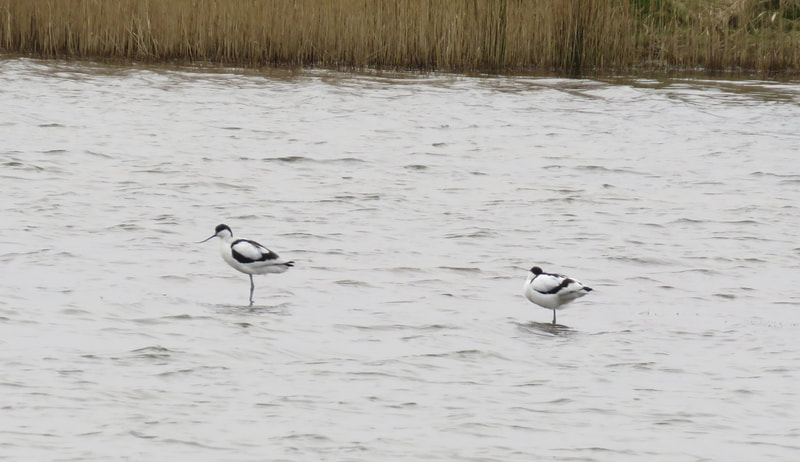 Avocet from Morecambe Hide
Avocet from Morecambe Hide The drive to the sea-hides is something of a challenge, the track being badly rutted and huge potholes awash after such a wet winter. Elder grow at the approach to the Morecambe hide and this time of year I look for Jew's ear that grows on the branches of the shrub. In structure the fungal fruit-body resembles an ear and looks soft and velvety. Today (and always) we are bird watchers and listeners too. Water-levels are high in the pool, the islets where birds nest are noisy with black-headed gulls, and water laps high about them. We search and search to find a distant pair of avocet. Redshank are calling and they huddle beneath a distant bank and on the shore of an island where there's a single widgeon amongst them.
The wardens know everyone is eager to see that avocet are returned to breed. The pair are far out across the pool so I pay little attention to the large ducks up-ended and feeding. I assume they're shoveler. But my images show at least one shelduck so I reckon both species are present.
As we return to the visitor centre I spy scarlet amongst mossy branches amongst the leaf-litter. Once I search I find a splendid display of scarlet elf cup, another early fungus. There are so many and the young fruit-bodies are perfect in shape, cup-like and tiny . As they mature they grow larger and lose that perfect form.
So a bird-listening day, memorable for bittern booming. Speaking our love of this place it's a sense of peace, a serenity as we gaze over the pools looking and listening for what we may or may not find. Today, we did not see bittern but we have seen them, and will again. Meanwhile, it's good to know they are here.










 RSS Feed
RSS Feed